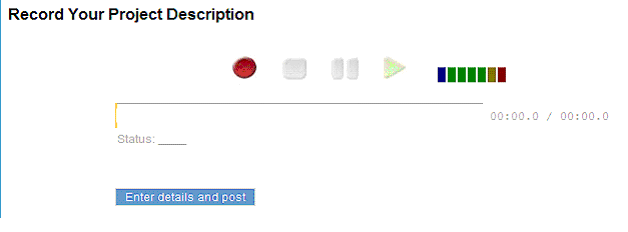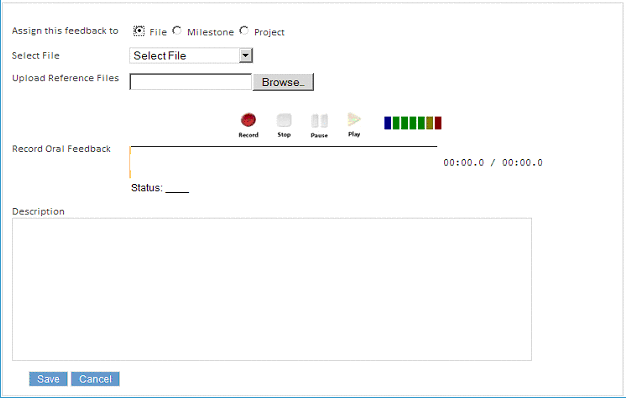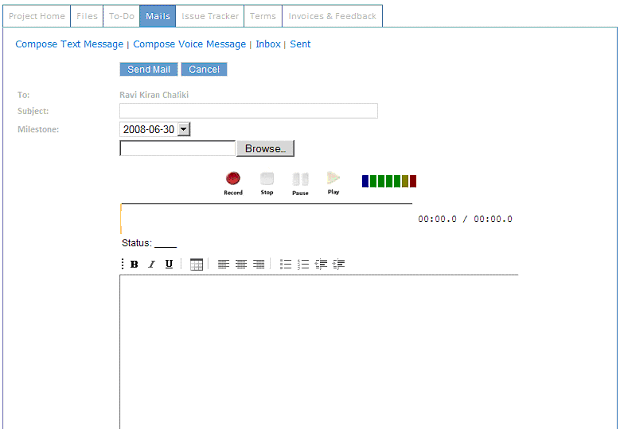I wish I could just walk across and talk to my team, it would make everything faster!
If you have outsourced work and have had this thought, you are not alone. The spoken word does seem to convey much more in shorter time. Voice inflections, pauses and the enthusiasm you can convey when you speak may not be conveyed through a long document.
One of the coolest features we have on p2w2 was the voice recording widget. You can “speak to” your potential business partners through p2w2.
The voice feature is available for you on p2w2 at all the right places. You can find it in recording project description, providing feedback, discussing issues and also for sending routine voice messages.
Record your project description
The controls are fairly simple. You have the Record, Stop, Pause and Play buttons. And
you have on-screen controls to edit what you recorded! The bars to the right indicate how audible your voice is to the control.
Worried that you might be speaking and your computer might not be hearing you? Well, we alert you if your microphone is not picking up an audible signal for more than 10 seconds.
Leave Voice Feedback
Same controls, different purpose! You can quickly leave a voice feedback, and if needed attach files and also type in text to make everything absolutely clear! Open the document you are providing feedback on, and talk into the microphone as you skim through your document/PPT etc. No more swapping repeatedly between applications, or breaking your chain of thoughts to type comments in.
Send a voice message
Emails are passé! You can “talk” to your p2w2 partner using the voice message feature.
Why not just pick up the phone you ask? Well, it might be 2 AM at where your business partner is!
Soon after your are done sending the message, the person you sent this message to can now play it back.
Delete parts of a recording
Did that pesky marketer call when you were in middle of a lengthy project description? Or did you get an important call you just had to take?
No need to start all over again, of course. You can select the part you want to remove from your recording, right click and delete.
Insert in recording
Finished speaking a whole paragraph and realized you missed out something? No problem! Click on the wave form and you can insert what you missed out in middle of your existing recording! Isn’t that just cool?
Pause and Restart a recording
Need to pause a while to recoup your thoughts? If you did not notice them already, the Pause buttons lets you take a break from recording to gather your thoughts, have a glass of water, open up that 6 pack – whatever helps you get moving again.
A tip: pausing for a shot while every few sentences helps you use these editing features easily. Not to mention you will be easier to follow for the person listening to the recording later!
Finally, some of us just like to talk than type. Overall, speaking your thoughts out into a recording tool is much faster and productive than attempting to type it all out. A document that would have taken you over an hour to type, format and attach could all be perhaps condensed into a half hour voice recording.
That’s all from us at p2w2 for now. If you have any cool features to suggest, write to me at Amit DOT Mullerpattan AT p2w2 DOT com.
About the author: Amit Mullerpattan is VP (Product) at www.p2w2.com, an online marketplace for services like writing, business consulting, research, software, online tutoring etc. He is responsible for the user experience with the p2w2 product and services.


















